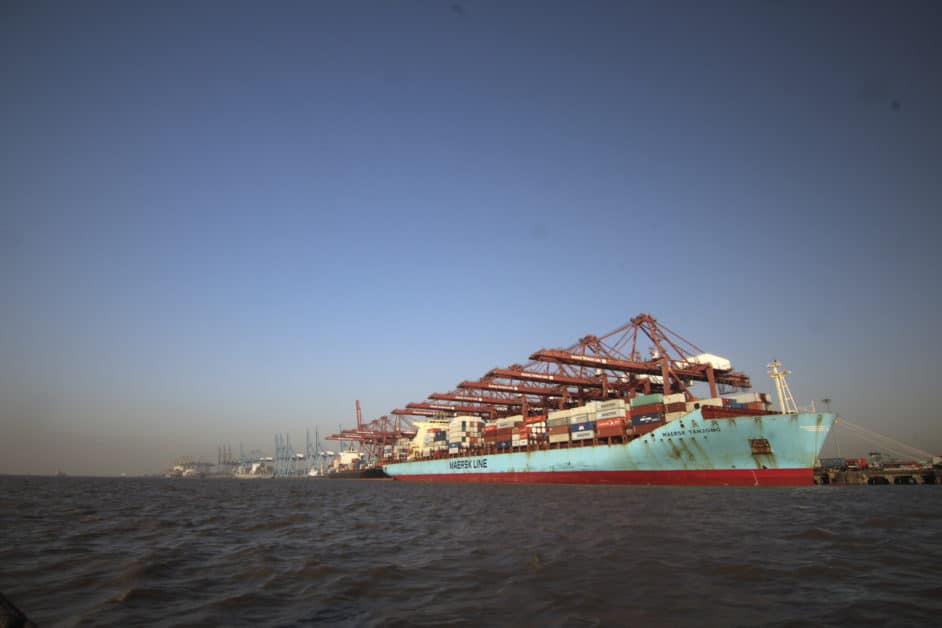Cargo movement at Gateway Terminals India Pvt Ltd (GTI), located at one of India’s busiest container ports, has faced serious delays. This is due to a sudden increase in cargo volume and poor infrastructure to handle the extra load.
The problem began when more ships than usual started arriving at the terminal. These additional vessels weren’t originally scheduled, but they were rerouted due to the Red Sea crisis and tensions in the Middle East. As ships took a longer route around Africa’s Cape of Good Hope instead of the Suez Canal, they brought more containers than the port was ready to handle.
The situation worsened when local traffic police enforced road closures, adding to the congestion. The heavy traffic is now affecting Gateway Terminals India (GTI), where many of these extra ships are arriving. This has caused serious problems for people involved in import and export (EXIM) trade.
According to Umesh Grover, Secretary General of the Container Freight Stations Association of India (CFSAI), “The congestion at GTI has lasted for 13 days without any improvement.” He explained that while there is no problem at the seaside, the roads leading to the terminal are unable to handle the large number of containers.
Impact of Road Closures and Traffic Restrictions
For five years, JN Port has been growing steadily, with an annual growth rate of 4.7%. Recently, between April and August, the port saw a 9.69% rise in container volume compared to the same time last year. In July, there was a 16.38% increase, and in August, it was 15.14%. But in late August, the situation got worse when traffic police stopped all movement for 24 hours due to a VVIP visit and Ganapati festival.
Sunay Mukherjee, the Chief Operating Officer at GTI, said that the increase in cargo volume has been a challenge for the port, but they are learning from it. He also noted that the average time for containers to leave the port, which is called dwell time, has gone from 36-40 hours to 48-50 hours.
Mukherjee emphasized that while the port continues to operate well on the seaside, the landside (roads leading to the port) is still facing delays. He also mentioned that they are working closely with other groups to solve the problem and hope to have the situation back to normal by the end of the week.
Challenges Faced by Cargo Transporters and Freight Stations
Trucks and tractor trailers that transport containers to and from the port have been the hardest hit. According to Grover, long queues of trucks extend all the way to Chandani Chowk near the port. The traffic police have set up roadblocks that cause more delays, even though they say trucks carrying export and import goods shouldn’t be stopped. This delay is affecting the entire EXIM trade cycle, slowing down deliveries to importers and making it hard to get export containers onto ships.
Grover explained that trucks carrying export containers often miss their scheduled ships and have to wait for the next one, which can take up to a week. This creates additional costs, as terminals charge extra storage fees.
Problems with Container Handling and Scanning
Another issue is how the containers are handled at the terminal. With limited space, terminals are stacking new containers on top of older ones, causing delays of up to 10 days. Grover pointed out that terminals are not following the “first-in, first-out” method, meaning the older containers should be handled first but are often buried under newer ones.
Additionally, around 7-8% of import containers are selected by customs for scanning. This process can take 10-12 hours, adding to the congestion. Grover suggested that customs should reduce the number of containers being scanned until the situation improves.
In conclusion, the traffic issues at Gateway Terminals India are causing serious delays for the entire EXIM trade cycle. While the port’s operations on the seaside are running smoothly, road congestion and poor landside infrastructure have created a major bottleneck, impacting cargo movement and increasing costs for importers and exporters. The terminal and port authorities are working hard to fix these problems, but it may take time for things to return to normal.

